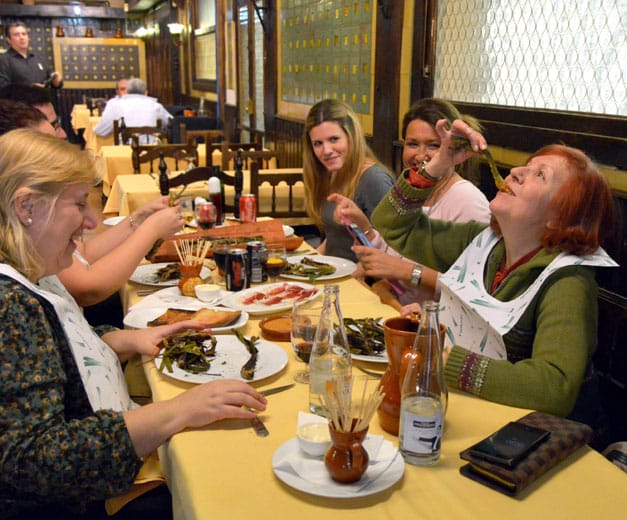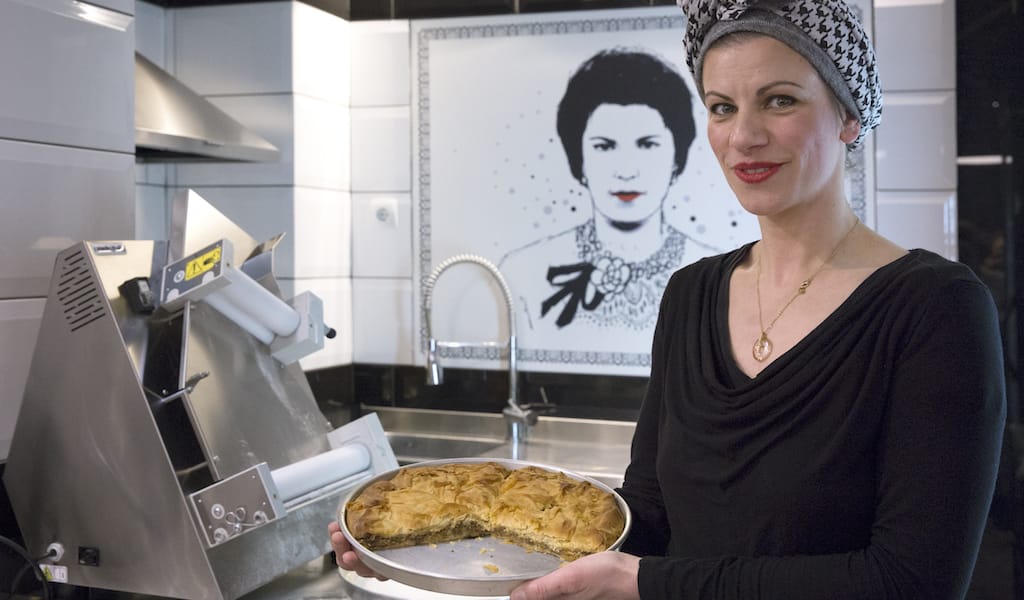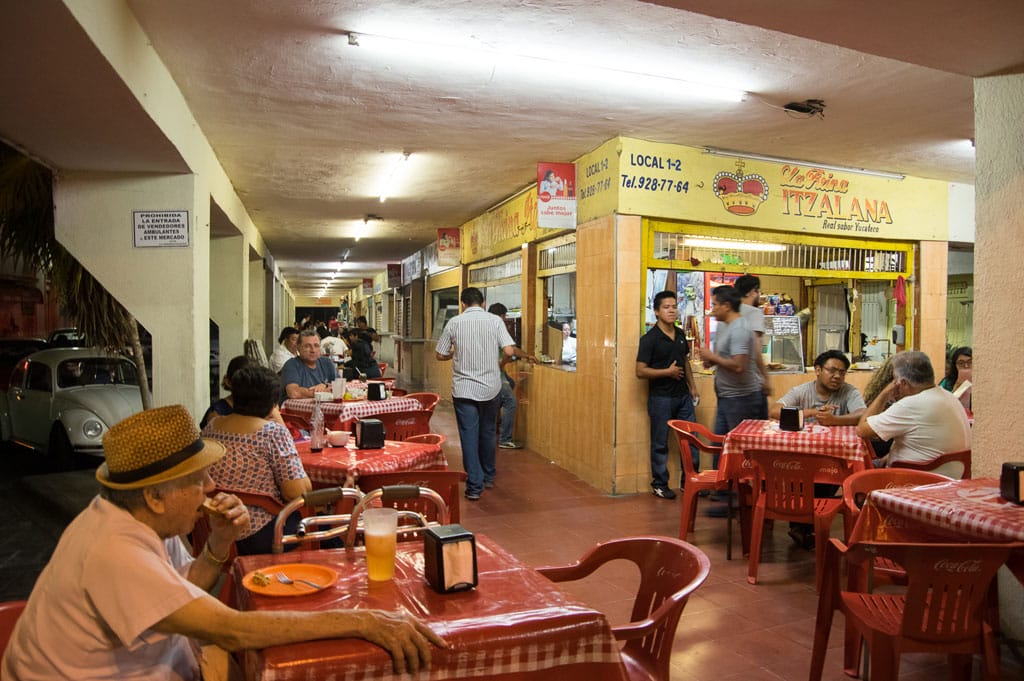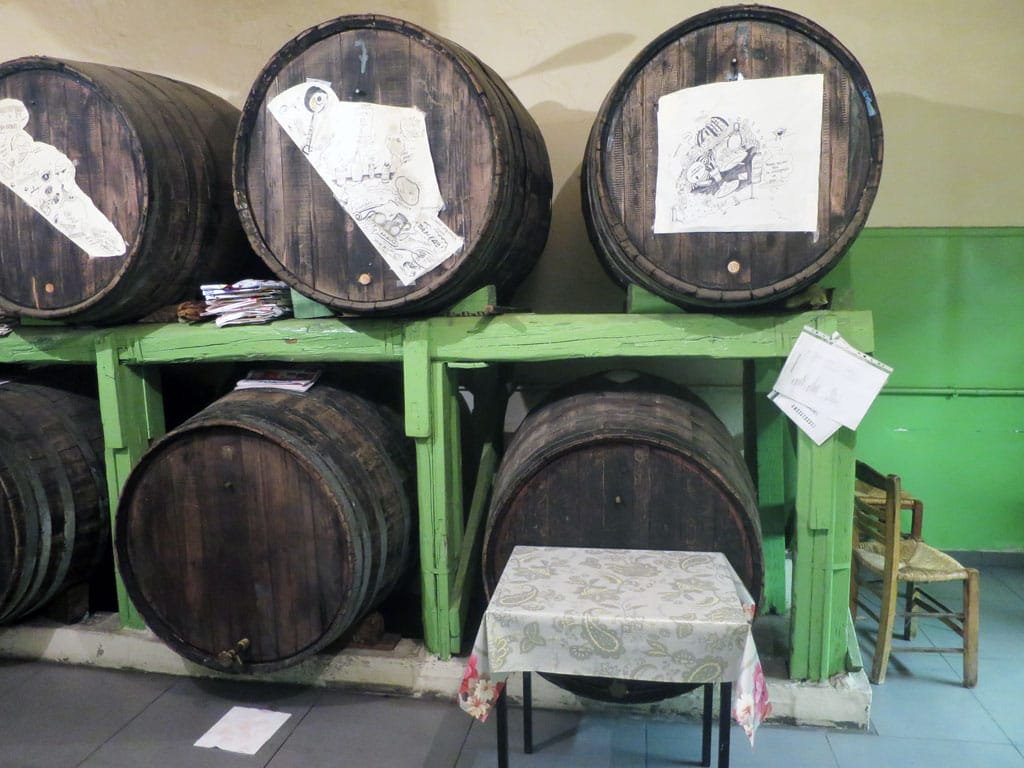Editor’s note: We regret to report that Can Manel has closed.
We don’t mind winter in Catalonia because it means the return of calçots, our beloved spring onions, and calçotadas, the wonderful celebrations that bring people together to eat them. While tradition usually calls for calçot eating to take place in the countryside, there are plenty of places to enjoy them in Barcelona as well. Since 2012, when Can Manel was reopened by the new owners Joel Balagué and Ana Roig, this homey eatery near the Sants train station has become a point of reference for the urban calçotada.
In the spirit of traditional calçotadas, Can Manel prepares a grilled lunch for a group (these onion feasts are not the kind of thing you do solo), with a tasting of this fragrant and sweet specialty. Calçots are typically grilled or barbecued, peeled and then dipped in a special sauce similar to romesco that is made from a picada (chopped mixture) of nuts with tomato, nyora (a dried red pepper), garlic, olive oil and bread. Generally, in addition to the onions, which serve as the appetizer, lunch also includes some butifarra (Catalan pork sausages cooked with peppers) and other grilled dishes. The point of the feast is not just to eat, but to thoroughly enjoy the time spent with friends (and of course to document the occasion with photographs to post to social media). It’s a socio-gastronomical celebration.
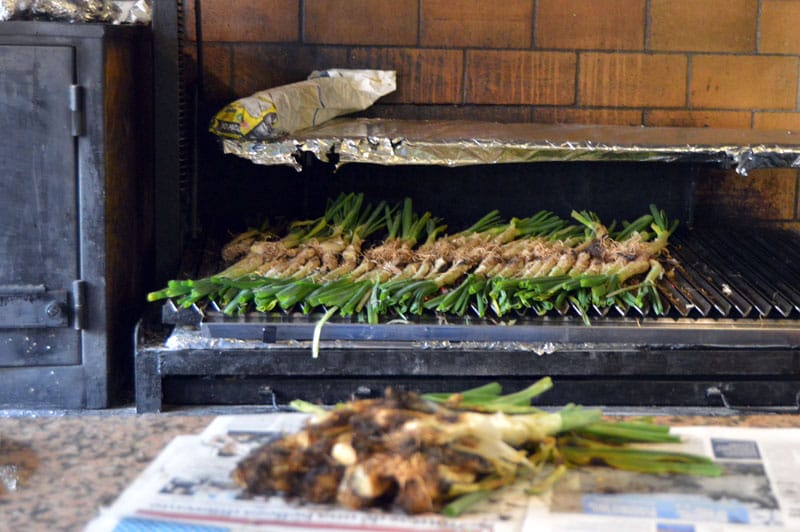
What we love about the calçotadas at Can Manel is their mix of pitch-perfect elements: the proper atmosphere of the rustic neighborhood restaurant, great service, the charcoal and pinewood grill, which imbues all the food with a touch of smoke and flame, the wonderful homemade sauce of almonds, walnuts and hazelnuts and, of course, the calçots themselves. The restaurant gets its onions from a farmer in Valls, which is where the best specimens are grown. They’re always fresh, full of flavor and a good size.
Can Manel excels at grilled meat (pork, lamb, veal, sausages, rabbit – one can even order a favorite chop with some advance notice), fish and vegetables, but these are not the only options. The restaurant offers two main seasonal menus; in winter the specialties are calçots, artichokes and snails, while in summer, there are salads, baked fish (cod with mongetas del ganxet, sea bass, gilt head bream, etc.), seafood and rice preparations and paellas (seafood paella, paella del senyoret, in which all the seafood comes already shelled and shucked, and a vegetable version).
Balagué and Roig carefully select every ingredient they use, ensuring they’re all of the highest quality. For the limited time they’re available, artichokes will be PGI (Protected Geographic Indication) from El Prat, in Catalonia, until their season ends and they are replaced by artichokes from the neighboring PGI of Tudela, whose season lasts longer. The butifarras and the rabbits come from small producers in Balagué’s village of Térmens, in Lleida.

With the raw materials so carefully chosen, thoughtful cooking is of the utmost importance. The artichokes are cut in half, sprinkled with salt, pepper and olive oil and placed directly on the grill to help those seasonings better penetrate the vegetables and enhance their flavor. The snails are the local variety bover, prepared two exceptional ways: a la gormanda calls for the mollusks to be cooked in a sauce and then finished a la llauna, or grilled in a pan over embers, while cargols a la Catxipanda has them cooked with butifarra, eggplant, red pepper and a white wine reduction and served in a clay casserole. The former is creamy and rich, a favorite among customers; the latter is bold in flavor without being spicy.
Can Manel is the kind of place that makes us wish winter would last just a little longer.
 February 5, 2019 Cocona
February 5, 2019 Cocona
Like many cooks and chefs before and after her, Ioanna Amoutzaki’s biggest culinary […] Posted in Athens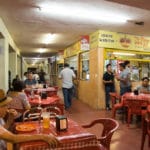 June 13, 2016 CB on the Road
June 13, 2016 CB on the Road
Mexico’s Yucatán Peninsula was home to some of the most important Maya cities during […] Posted in Mexico City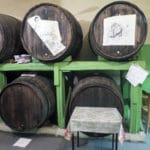 November 16, 2016 Oinomagereion to Trifylli
November 16, 2016 Oinomagereion to Trifylli
Hidden behind the imposing stadium of the Panathinaikos football team – the green team […] Posted in Athens
Published on February 11, 2015
Related stories
February 5, 2019
AthensLike many cooks and chefs before and after her, Ioanna Amoutzaki’s biggest culinary inspiration was her mother, Lambrini. Born and raised in Xanthi, a beautiful town in northern Greece, Ioanna spent her childhood in a busy kitchen, learning the art of cooking. Both of her parents came from Smyrna (now Izmir) in Asia Minor –…
June 13, 2016
Mexico CityMexico’s Yucatán Peninsula was home to some of the most important Maya cities during pre-Hispanic times. One can still get a glimpse the glory of those cities in ruins such as at Chichen Itza, considered one of the seven wonders of the modern world. On the ruins of a smaller Mayan city, T’ho, the Spanish…
Experience places like these on our Athens Culinary Walks.
November 16, 2016
AthensHidden behind the imposing stadium of the Panathinaikos football team – the green team as opposed to its eternal rival, Olympiakos, the red team – lies a tiny eatery that recalls Athens before the 1960s, when urban sprawl destroyed everything. Occupying two adjacent whitewashed houses, Oinomagereion to Trifylli, named after the team’s clover logo, has…







































